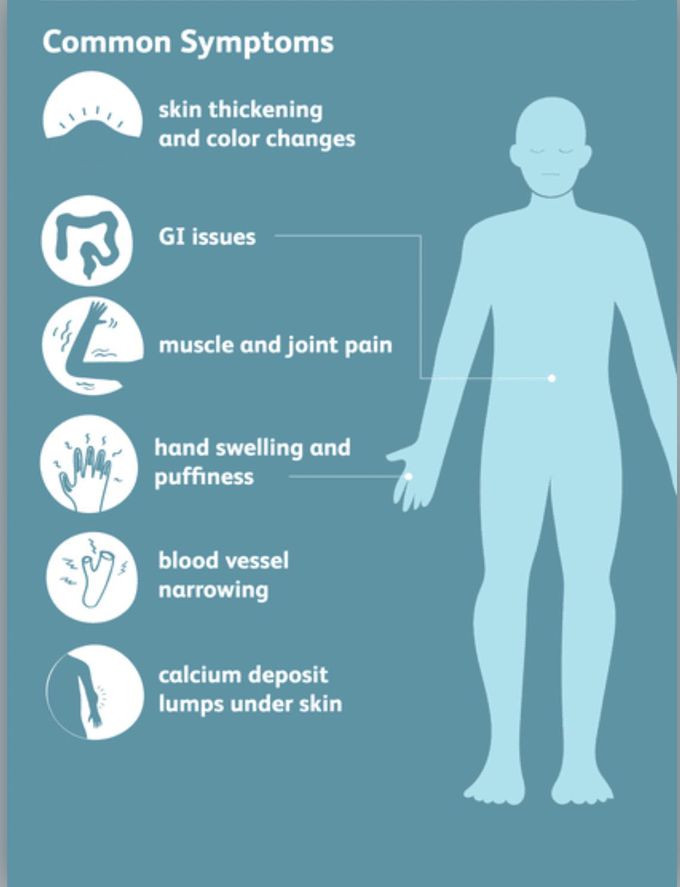


Scleroderma
Scleroderma is a chronic, although rare, autoimmune disease in which normal tissue is replaced with dense, thick fibrous tissue. Normally, the immune system helps defend the body against disease and infection. In patients with scleroderma, the immune system triggers other cells to produce too much collagen (a protein). This extra collagen is deposited in the skin and organs, which causes hardening and thickening (similar to the scarring process). Although it most often affects the skin, scleroderma also can affect many other parts of the body including the gastrointestinal tract, lungs, kidneys, heart, blood vessels, muscles and joints. Scleroderma in its most severe forms can be life-threatening. The exact cause of scleroderma is unknown. Although rarely, scleroderma can run in families. Most cases do not show any family history of the disease. Scleroderma is not contagious. In addition to the thickening of skin, the following other symptoms may occur in a person with scleroderma: Swelling of the hands and feet Red spots on the skin (telangectasias) Excessive calcium deposition in the skin (calcinosis) Joint contractures (rigidity) Tight, mask-like facial skin Ulcerations on the fingertips and toes Pain and stiffness in the joints Persistent cough Shortness of breath Heartburn (acid reflux) Difficulty swallowing Digestive and gastrointestinal problems Constipation Weight loss Fatigue Hair loss In addition to these symptoms, 2 other conditions—Raynaud's phenomenon and Sjögren's syndrome—also affect patients with scleroderma. Approximately 85% to 95% of scleroderma patients experience Raynaud's phenomenon. However, primary Raynaud's phenomenon is common and often occurs by itself without any underlying connective tissue disorder. Only 10% of patients with Raynaud's phenomenon will develop scleroderma. Sjögren's syndrome is manifested by dry eyes and mouth. This dryness is due to lack of secretion of tears and saliva as a result of immune damage and destruction of the moisture-producing glands of the body. This condition is named after the Swedish eye doctor, Henrik Sjögren, who first described it. It is seen in approximately 20% of patients with scleroderma

